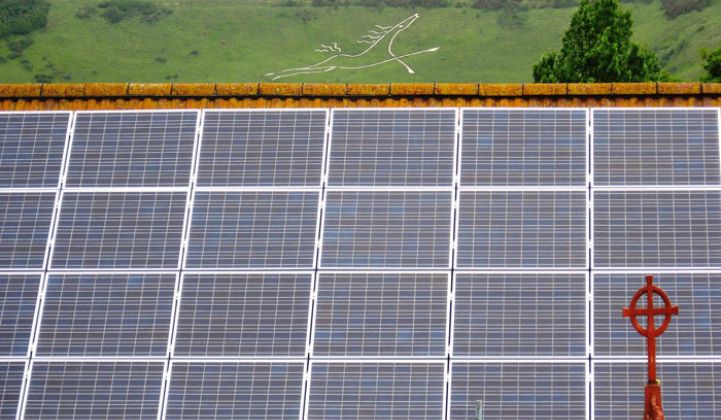The U.K. government scheme to pay homeowners to generate electricity through photovoltaic (PV) solar panels has sparked debate and argument throughout the green community. Recently, I’ve come across a number of commonly held concerns about feed-in tariffs (FITs) which I feel need to be addressed.
Myth #1: The taxpayer pays for the feed-in tariff
By now there have been plenty of articles written debunking this one, so I won’t spend too long on it: the feed-in tariff is paid for by the energy companies, not the taxpayer. It’s true that this is likely to be passed onto consumers, but surely this is right. Those who don’t have panels at home pay for those that do -- that’s a strong incentive to go solar, and the best way to build a sustainable and growing economy around domestic solar.
Myth #2: It’s just a way for big business to make profits
This seems to be the myth gaining most traction at the moment. Indeed, I had a lengthy and well-mannered discussion with a friend of mine about this just yesterday. Although it’s true to say that large businesses have exploited the FIT scheme in the U.K. over the last 12 months or so in order to gain big payouts from large non-domestic solar installations, it is certainly not the case that the scheme has been built to benefit big business. Indeed, proposed updates to the scheme have been designed to massively reduce the potential for this exploitation and move the balance back to the individual householder installing small solar panel systems on their properties.
Myth #3: There’s no environmental benefit
I still hear this all the time. Seriously. Either it’s that we don’t have enough sunlight in the U.K. to make solar efficient (panels utilize daylight, not direct sunlight for power generation and can generate at least 40 percent of their potential yield on a completely overcast day), or it’s that the European Emissions Trading Scheme negates any carbon saved through solar generation. This last objection hinges on fairly circular logic: just because we are currently stuck in a scheme which allows large GHG producers to purchase emissions off the back of savings through schemes such as the FIT, does this mean we should give up and not bother with renewables at all? Better to develop a strong, thriving and sustainable market for renewables (of which domestic solar can play a critical role) over the next few years in order to show up the ETS for the farcical nonsense that it is.
Myth #4: It’s not a sustainable program
Proponents of this argument are often heard quoting the fact that Germany has now significantly reduced the level of its FIT. Again, this logic is backwards. The whole point of a FIT is to stimulate a nascent market and emerging technology, develop it to a point where economies of scale really kick in and then reduce it as prices come into balance with the prior technology. In this case, with fossil fuel prices rising and huge economies to be made both in the manufacture and installation of PV solar panels, things can only improve.
***
Dane Cross works on behalf of Ardenham Energy and is a green aficionado, passionate about getting the word out on solar PV and all things green.



